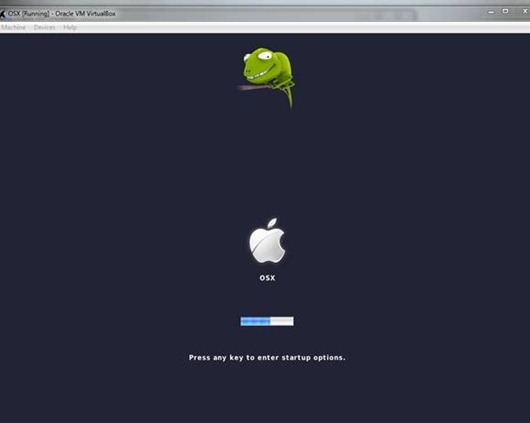

#Install mac os x leopard in vmware player Patch#
To work around this, patch it using the EFI unlocker from GitHub. In the ’Settings’ dialog, click ‘Add Device’, select ’Sound Card’ and click ‘Add’įusion blocks the use of regular 10.6 (not server) in the EFI ROM.
 For destination, I put it in ‘Documents’ -> ‘Virtual Machines’ -> ’Snow Leopard’. In the ‘Virtual Machine Summary’, click ‘Customize Settings’. Operating system: ‘Apple OS X’ -> ‘Mac OS X Server 10.6’. For the installation method, select ‘Create a custom virtual machine’. Here is how I got it to work:įusion doesn’t officially support 10.6, only 10.6 server. Installing Snow Leopard today in a Fusion VM is not particularly difficult, but I did find a few complications. I’m a big fan of Fusion as it allows one to test/experiment with all manned of different operating systems, without of course having to buy any hardware or risk breaking you main machine. Fortunately, at the time VMware’s Fusion product did allow running the prior 10.6 release, and I have relied on this more than a few times in the years since. As it happens, I did more or less the same dance nine years ago when Apple released MacOS X 10.7 Lion and remove the ability to run older PowerPC applications via Rosetta. Eventually I will probably have to upgrade and resort to running my old software in a virtual machine. I am as result sticking with the prior release (macOS 10.14).
For destination, I put it in ‘Documents’ -> ‘Virtual Machines’ -> ’Snow Leopard’. In the ‘Virtual Machine Summary’, click ‘Customize Settings’. Operating system: ‘Apple OS X’ -> ‘Mac OS X Server 10.6’. For the installation method, select ‘Create a custom virtual machine’. Here is how I got it to work:įusion doesn’t officially support 10.6, only 10.6 server. Installing Snow Leopard today in a Fusion VM is not particularly difficult, but I did find a few complications. I’m a big fan of Fusion as it allows one to test/experiment with all manned of different operating systems, without of course having to buy any hardware or risk breaking you main machine. Fortunately, at the time VMware’s Fusion product did allow running the prior 10.6 release, and I have relied on this more than a few times in the years since. As it happens, I did more or less the same dance nine years ago when Apple released MacOS X 10.7 Lion and remove the ability to run older PowerPC applications via Rosetta. Eventually I will probably have to upgrade and resort to running my old software in a virtual machine. I am as result sticking with the prior release (macOS 10.14). 
Last year’s macOS 10.15 Catalina release removed support for all 32-bit applications, including for example Lightroom 6 and Photoshop CS6. When it comes to running older software on current systems, Apple has a pretty poor track record.







 0 kommentar(er)
0 kommentar(er)
